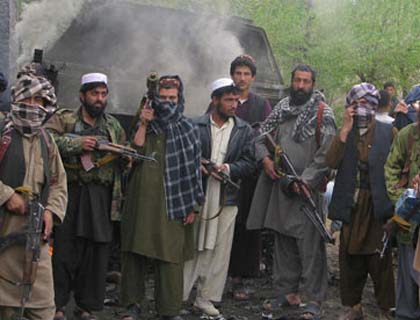Taliban militants consider the group as an Islamic political movement fighting for restoration of Sharia in the country through political power. However, the group is increasingly turning into an insurgency group wrecking havoc across the country through roadside bombing, kidnapping and terrorist attacks on government offices and military installations as well as foreign entities. In last over-a-decade, the militant group has been fighting against Afghan National Security Forces and US-led NATO forces which have left thousands of deaths of military personnel and civilians.
The main point of the discussion here is that the group is increasingly turning to a typical insurgency group as many other insurgent groups across Africa, Asian and Latin America, targeting civilian populations along with other government-affiliated institutions. In fact, Taliban are increasingly turning into a group that does not differentiate between enemy combatants and civilians. This is the course that puts the Taliban on a sliding slope to an underdog but resistant militancy in the country.
In fact, the different branches of the insurgent groups operating under the umbrella group of Taliban follows the path of other global typical terrorist groups such as Al-Qaeda terrorist network considering it legitimate to target civilians as part of their campaigns against foreigners and the secular western-backed states. This is indicating that Taliban have gradually diminished from a movement struggling for political power with some levels of grassroots support into an insurgent group that has turned back even to their own principals. The typical characteristics of the movements that diminish into anti-state insurgency activities are that they engage in sporadic terrorist activities without differentiating between government agents and civilians. They carry out subversive activities and day-to-day sabotage against the state and public entities.
In the past twelve years of war in the country, the Taliban and its other affiliate groups have committed countless cases of atrocities against the innocent civilians. Formally, Taliban denounce civilian casualties in the wars, but still are responsible for more than 80 percent of civilian casualties in the country. Despite Taliban’s formal stance on protection for civilians, the Taliban fighters have been extensively engaged in road-side bombings, kidnappings and organizing assaults on public offices which has led to the loss of thousands of civilian lives. According to the UN, Taliban are attributed to most of the civilian casualties each year as they do not commit themselves to protection of civilians.
What is specifically important here is that the Taliban are gradually evolving into a typical insurgency group that target public assets and civilians as they lose their strength to confront the security forces in conventional wars. This year was one of the bloodiest years for civilians with sharp rise in civilian casualties for which mainly the Taliban are responsible. In recent weeks the insurgent groups have intensified their campaign of violence against the civilian population of Afghanistan. The Taliban fighters have killed workers, passengers, government employees and ordinary people in far corners of the country.
In his Eid message, the Taliban fugitive leader Mullah Omar encouraged his fighters to continue violence and terror, rejecting any compromise with the ongoing peace efforts. Once again, Mullah Omar told his followers to minimize civilian casualties, accusing the foreign and Afghan forces responsible for the heartbreaking rate of civilian casualties. Despite Omar’s pledge for civilian protection, the militants continue to commit atrocities against civilians. The trend has continued and the Taliban seem to be far from changing course on targeting civilian populations across the country. Only recently the militants have killed dozens of innocent civilians across the country particularly in the southern parts of Afghanistan.
The most heinous attack was the well-organized assault on a courtroom in Farah province which left 53 people, mostly civilians, dead and many others injured. The assault shocked the nation, but Taliban tried to justify it, saying that the well-coordinated attack was aimed at taking revenge from Afghan judicial system for trying Taliban prisoners. As the Taliban are not in a status to confront the Afghan security forces in conventional wars, they would continue to organize attacks on public offices and sabotage construction and development efforts. Not only that, the group will further slide into targeting civilian targets as the Afghan security forces grow more efficient and smart in the counterinsurgency campaign.
Assuming that the Afghan army and police forces will began a sustained phase of military partnership with the US after 2014, it will mean that the Afghan security forces would be more equipped and trained to fight to contain the ongoing insurgency. As result of that process, the Taliban and other militant groups would not be able to engage in direct warfare against security forces across the country, rather they would further turn to unconventional wars such as bombings, attacking on public offices and civilian populations. If the ongoing peace efforts do not succeed in the near future and if the Taliban fail to resurge forcefully, a scenario that is highly unlikely, the risk will exist that the militant group will turn into a long-term insurgency engaged in low-scale subversive activities against the government and the civilian populations.
Ironically, with the Taliban increasingly targeting civilian populations, the public aversion to them have been on the rise in the last twelve years. During the last decade, Afghanistan has undergone profound social transformation. Along with the social change, the Afghan population, particularly the young generation, has radically alienated from the Taliban. As a disadvantage to the Taliban, a middle class population is on the rise that is more educated and enjoys better standards of life. This class is spearheading a drastic change in the Afghan society which will gradually generalize new values and ideas in the next decade.

